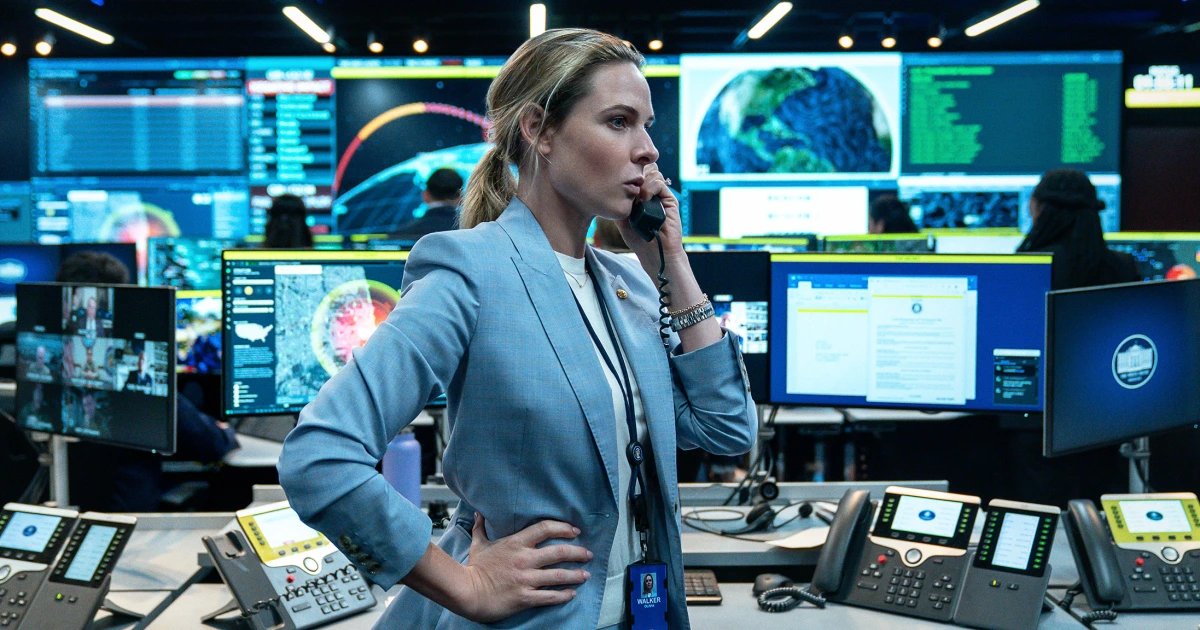Copyright MSNBC

Director Kathryn Bigelow’s new thriller, “A House of Dynamite,” is not simply a gripping film — it is a wake-up call. The movie dramatizes, in real time, the terrifying 30-minute window between the launch of a nuclear missile bound for the U.S. and its impact. In doing so, the film exposes a brutal truth that too many decision-makers and policy experts in Washington refuse to admit: Long-range missile defense will not protect us. Our only real path to escape nuclear catastrophe lies in reducing global arsenals. From the film’s first frames, Bigelow dispels the comforting illusion that technology can shield us from a nuclear attack. “A House of Dynamite” depicts U.S. ground-based interceptors launching and failing to stop the incoming missile. “So it’s a f---ing coin toss? That’s what $50 billion buys us?!” exclaims the frustrated secretary of defense, played by Jared Harris. The answer, in fact, is yes. In scripted tests, U.S. missile defenses against intercontinental weapons have succeeded only about 55 percent of the time — under ideal conditions, with known targets, no decoys and perfectly timed launches. Real war introduces deception, saturation attacks and human failures. The system is brittle. A “silver bullet” defense is a fantasy. Long-range defenses don’t work, and they make it harder to reduce the nuclear threats we face. The U.S. has spent hundreds of billions of dollars chasing long-range missile defense systems. Not one has delivered dependable protection. The bloated contracts persist, the well-connected lobbyists benefit and the public clings to hope. But the underlying logic is flawed: Long-range defenses don’t work, and they make it harder to reduce the nuclear threats we face. As our adversaries know, the best way to defeat our defenses is to build more offensive missiles. Rather than investing even more in the fool’s gold of missile defense, such as by spending trillions on President Donald Trump’s delusional Golden Dome, we need to focus on what works: arms reductions. Agreements such as the U.S.-Russian New Strategic Arms Reduction Treaty, or New START, have reduced nuclear arsenals about 90 percent and lowered the nuclear threat much more effectively than missile defense ever will. As the film points out, however, this decadeslong arms reduction effort is on life support: “At the end of the Cold War, nations reached consensus that we should have fewer nuclear weapons. That era is now over.” New START is the last remaining U.S.-Russian arms reduction agreement. It will expire Feb. 5, 2026 — almost exactly 100 days from now — and it cannot be extended. These treaties can take years to negotiate, yet Washington and Moscow have not even started talks on a replacement. We need more time. Fortunately, Russian President Vladimir Putin has offered to adhere to New START limits for one year after the treaty expires, and President Trump’s initial response was positive. We must nail this down, and soon. We must freeze arsenals in place, not increase them. I recently urged the Trump administration to work with Russia to adhere to New START for another year and actively engage in talks on a successor treaty. If New START expires without commitments to stick to its limits, both the U.S. and Russia will be free to expand their strategic nuclear arsenals for the first time in decades, and a new nuclear arms race will loom. Some will argue deterrence has worked so far. But that is a fragile comfort. I have long pushed for policies for deep and verifiable reductions in nuclear arsenals — and I continue to believe that must be the North Star of U.S. strategy. We must reengage on arms control with not just Russia, but also China. We must revive diplomatic initiatives with North Korea, Iran and other nuclear aspirants. And we must constrain tactical stockpiles in Europe and Asia. The only nuclear defense worth believing in is disarmament — rooted in treaties, inspections and verification. Every warhead removed is one less we need to fear. Some will argue deterrence has worked so far. But that is a fragile comfort. We have been lucky. Mistakes, technical malfunctions, human error, miscalculation — each scenario could trigger nuclear disaster. “A House of Dynamite” dramatizes just one missile, but imagine dozens — perhaps hundreds — launched in coordination. The prospect becomes unthinkable. So let us not treat this film as mere entertainment. Let us heed it as testimony. “A House of Dynamite” reminds us that more nuclear weapons do not make us safer. We must stop acting as if we can build an impenetrable umbrella and instead treat the threat for what it is: an existential gamble we cannot afford. The real answer is not more technology, but fewer weapons.



